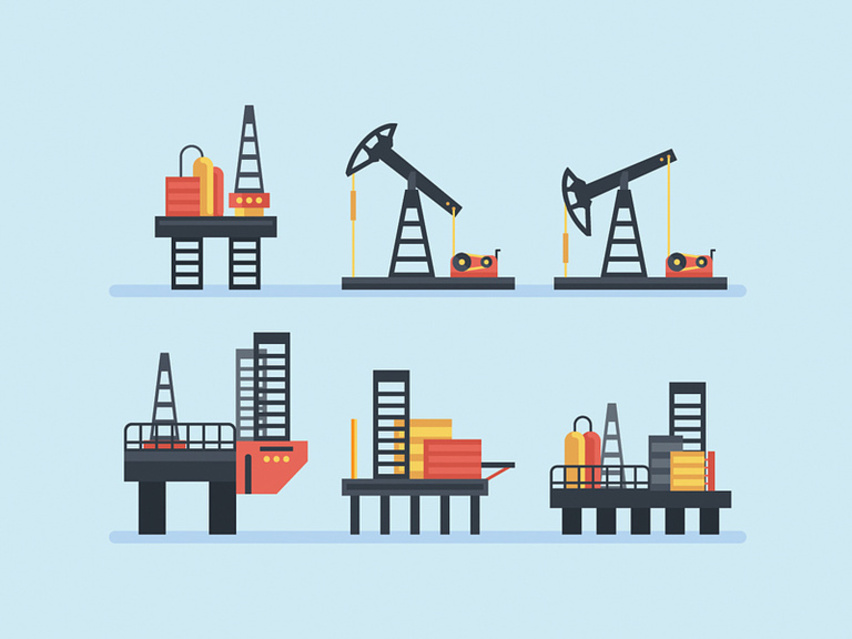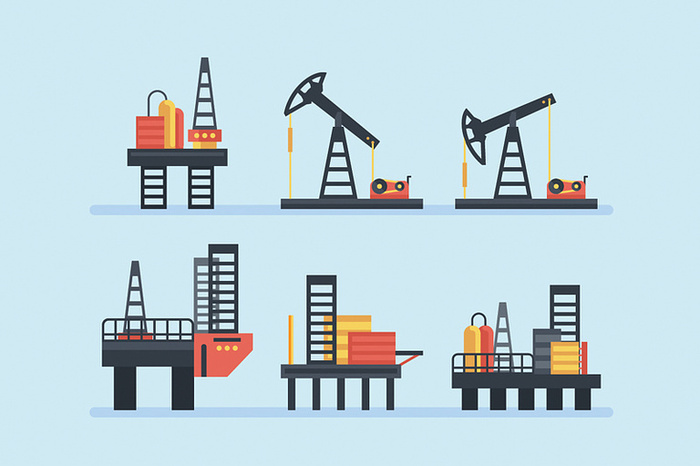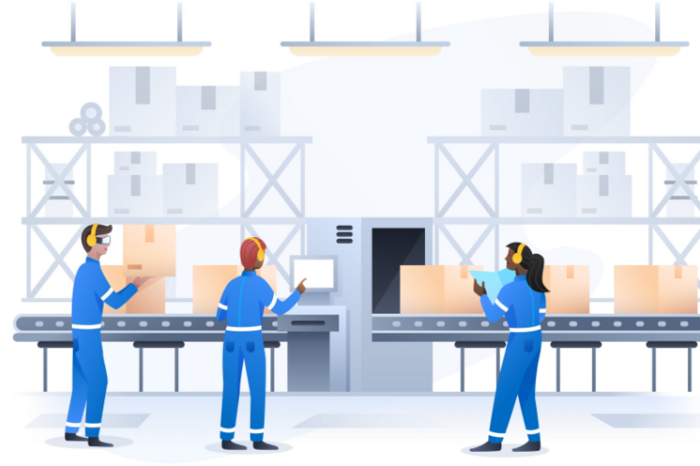Img Source - Vecteezy
Safety and operational efficiency are paramount priorities in the oil and gas industry, essential to the success of companies. By employing advanced tracking and data analysis technologies, organizations can monitor the movement and condition of critical assets, minimize downtime risks, and optimize operational processes. This article focuses on the benefits of asset tracking technologies for the oil and gas industries.
Challenges Facing Companies in the Oil and Gas Industry
As statistics show, global oil reserves increased by an average of 0.7 million barrels per day in 2023. Despite the Red Sea crisis, global production of liquid fuels is expected to grow by 0.6 million barrels per day in 2024, while international oil consumption will increase by 1.4 million barrels per day over that year.
Against increasing fuel consumption, companies must operate more efficiently to meet the continuously growing demand in the international market fully. However, oil and gas companies need help to address their goals successfully. Let's list the leading difficulties these companies face.
Difficulties in Preventing Security Threats
In most cases, operators control equipment at oil and gas enterprises. Specialists periodically monitor the equipment's condition and analyze the devices' current technical parameters. However, there are situations when a person cannot notice the wear of parts or the failure of various mechanisms. As a result, the risks of leaks, explosions, and other emergencies increase at the enterprise, posing a danger to personnel.
Poor Visibility of Equipment and Assets
It is only sometimes possible for companies to monitor the location and movement of equipment with the technical means available. This often leads to the loss of valuable assets and increases expenses for purchasing new devices. Let's consider several examples of equipment that require constant monitoring:
- Tankers are special containers used to store various substances in technological installations such as oil refining, gas, and other industries.
- Dust collectors are used to clean natural gas from various liquids or impurities at compressor stations of gas pipelines.
- Heat exchangers operate in cooling and heating systems, transferring heat from one liquid to another.
- Evaporators are designed to convert liquid substances into a gaseous state.
- Air coolers reduce the temperature of gaseous and liquid substances that are heated during the production process.
- Towers are used for oil processing and are equipped with insulation, platforms, and ladders.
Various connecting accessories, equipment for water purification, regulating and shut-off valves, and reactor units may also require monitoring.
Challenges with Remote Monitoring of Oil and Gas Facilities
The absence of remote monitoring increases security risks for companies in the oil and gas industry. Enterprises in this sector operate complex facilities handling explosive fuel types. Without periodic remote inspections, this can lead to equipment downtime or accidents, negatively impacting the health and lives of employees due to hazardous substances.
Interval Equipment Maintenance
Equipment and machinery used in oil and gas facilities require regular technical maintenance. However, adhering to maintenance schedules can be daunting, leading to a high likelihood of breakdowns or increased maintenance costs.
Violation of Compliance with Regulatory Requirements and Safety Standards
A common problem faced by many enterprises is the violation of labor discipline. Employees do not always adhere to regulatory requirements and may not follow safety standards, especially when working in confined spaces (such as when servicing tanks or towers). These violations reduce the efficiency of company operations and sometimes lead to accidents and employee injuries, including fatalities. Implementing digital systems to enhance workplace safety can help address these issues.
What is an Asset Tracking System?
An asset location tracking system is a modern digital tool that tracks the current location and movement of assets. It operates on special software and hardware (tags, beacons, markers) installed indoors or on tracked objects. These devices operate around the clock and periodically emit radio pulses, which are captured by unique readers and sent to a server for processing. The information obtained is then displayed on users' smartphones or computers.
Various technologies can be used to implement an asset tracking system in an oil and gas company's infrastructure. However, it is important to understand that each enterprise has safety and maintenance rules that may prohibit certain technologies. Therefore, it is necessary to study this issue before making a choice.
The most in-demand technologies at the moment are:
- UWB (Ultra-Wideband) is a technology known for its highest location accuracy. Its algorithms enable the analysis of object location data and its utilization to optimize workflow processes. UWB can track forklifts, valves, pumps, and tools, significantly enhancing company security protocols and operational efficiency.
- Bluetooth® LE (Low Energy) is a power-efficient technology that operates through beacons, enabling object detection with an accuracy of up to 1 meter. Ideal for indoor positioning systems, it allows tracking assets and company personnel. Bluetooth® LE can be integrated with similar systems, video surveillance, or access control, providing comprehensive company analytics.
- QR code is installed on tracked objects and provides detailed information upon scanning, including scheduled maintenance dates. This system requires no hardware, resulting in low implementation costs.
- RFID (Radio-Frequency Identification) is a wireless technology facilitating sensor communication through radio waves. Special RFID tags with unique identifiers are used, and readers determine these codes to locate objects precisely. This technology is used in the oil and gas sector for inventory management, asset monitoring, or supply chain control.

How Tracking Systems Can Benefit the Oil and Gas Industry
A tracking system enables more efficient asset management in the oil and gas industry. It can monitor environmental conditions, track vehicles, equipment, and small tools, perform predictive maintenance on machinery, and improve personal safety.
Monitoring Environmental Conditions and Preventing Emergencies
The platform provides extensive opportunities for monitoring environmental conditions, including in enclosed or confined spaces. Thanks to a special set of algorithms and sensors, continuous monitoring of air temperature, humidity, oxygen concentration, and other indicators can be performed. This allows for maintaining safe working conditions and preventing emergencies.
Real-Time Tracking and Monitoring of Assets, Transport, and Workers
Any objects - equipment, tools, vehicles, and company personnel - can be tracked through the system. Administration receives detailed information about their whereabouts and can make effective managerial decisions to optimize work processes.
Tracking Small Tools to Prevent Theft and Loss
The system allows tracking of small tools that can be easily taken outside the facility's premises. Once the tracked object crosses the set boundaries, the administration receives a corresponding notification and can direct security personnel to the exit.
Tracking Entries/Exits into Hazardous Zones
The platform enables zoning. The facility area is divided into zones, and employees are granted access rights to specific areas. In the event of unauthorized entry, the program alerts responsible individuals. In addition, sensors can provide additional information, such as how much time a worker spends in a particular zone.
Transition to Predictive Equipment Maintenance System
After implementing the technology, management no longer needs to manually keep maintenance records and monitor the schedules for scheduled equipment servicing. The software takes care of these tasks. Thanks to its application, a transition to predictive maintenance can be made, allowing one to stay informed about the current state of equipment. The results of implementing the platform include:
- reduction of maintenance expenses through equipment monitoring;
- downtime detection;
- analysis of equipment performance.
Ensuring Safety through Strict Adherence to Safety Regulations
Implementing the system ensures precise compliance with safety standards and regulations, improving labor discipline and enhancing personnel safety. Recently, Navigine has initiated a collaboration with TRAKS PRO, a provider of safety training services in GCC countries, to develop a solution for ensuring safety in confined spaces. With its assistance, personnel in confined spaces can be accurately monitored, and emergencies can be promptly addressed.
Customizable Reports and Analytics
Equipment tracking software aids in detailed analysis of operations within the oil and gas industry. Sensors and readers can be used to obtain asset movement history, analyze workloads, and create heat maps. Analytical data enables organizational optimization and improves internal logistics.
Navigine offers customers a digital tracking platform tailored for effective use in the oil and gas sector. Through this platform, productivity can be enhanced, high safety levels achieved, and maintenance costs reduced. For more details about the platform's functionality, visit https://navigine.com/demo-rtls/.
Take advantage of Navigine's offer to implement high-quality real-time oil and gas equipment tracking. Contact the company's representatives for consultations and software orders by filling out the feedback form or scheduling a free online call with a company manager.




